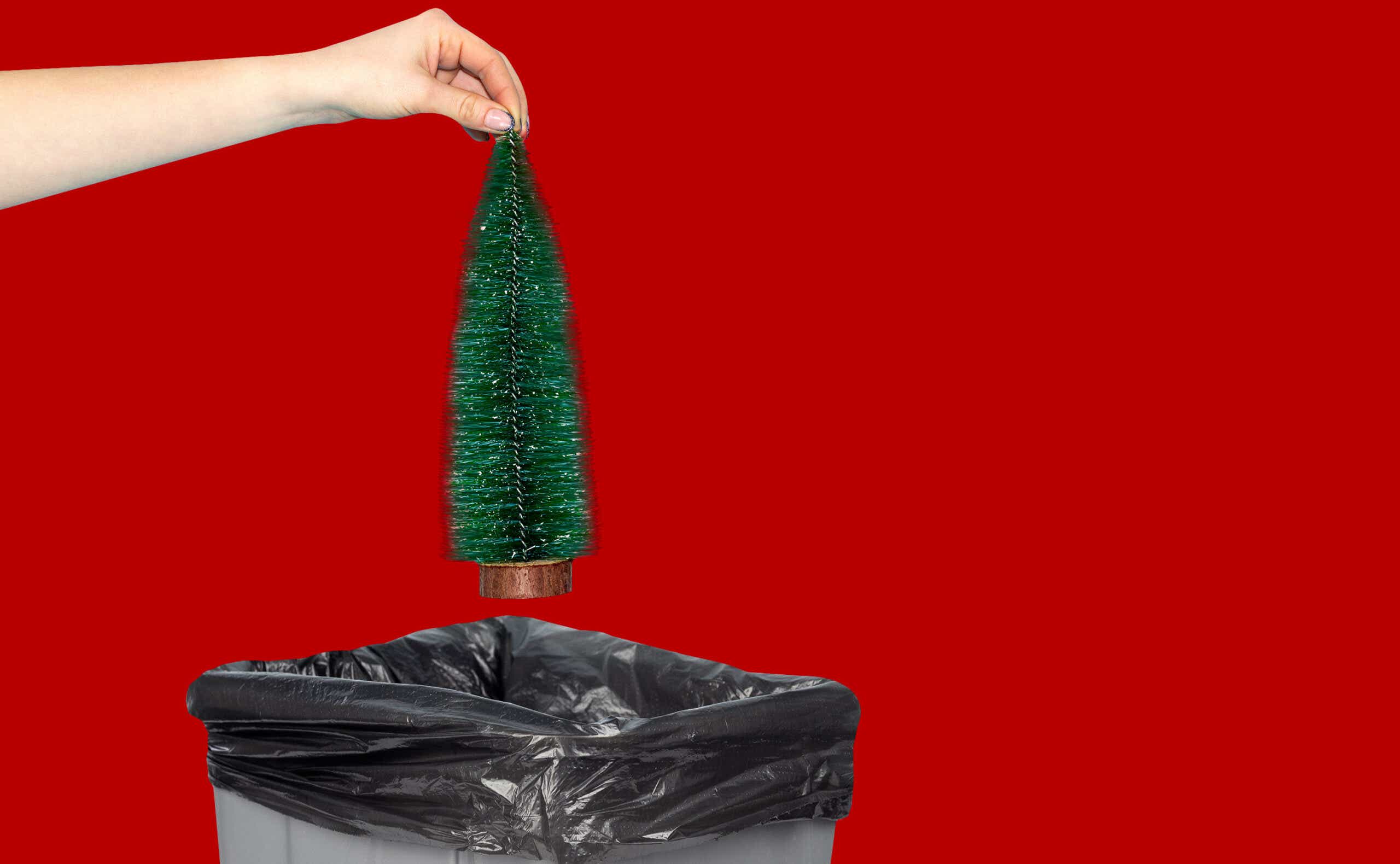It’s the holiday season and many of us are hoping to bask in the magic of a frosty winter wonderland. But this year, that snowfall may be lighter than in years past, and a White Christmas is more of a far-off fantasy than ever. According to the World Meteorological Association, 2023 is “virtually certain” to be the hottest year in recorded history. Since the earth is heating up due to the warming effects of climate change, winters are (unsurprisingly) getting hotter.
As the beloved aesthetic of the Christmas season threatens to disappear, you may feel moved to evaluate your carbon footprint to reduce your impact. But while you’re cutting back on driving or investing in a reusable water bottle, you may also begin to wonder about a certain elephant in the room: The ceiling-high plant (fake or faux) adorned with tinsel and twinkly lights. Christmas trees are the centerpiece of most holiday decor, but is it really sustainable to cut down a living tree? And since artificial alternatives are primarily made of plastic, is there a chance a fake tree may be even worse? Could you do the unthinkable — celebrate Christmas without a tree — without coming off as a total Scrooge?
For guidance, Katie Couric Media turned to dedicated zero-waste influencer Kathryn Kellogg, a National Geographic spokesperson for plastic-free living and author of 101 Ways to Go Zero Waste. The good news? She has some reassuring pointers on keeping your beloved traditions while also reducing waste.
Are real Christmas trees sustainable?
First things first: Is a real Christmas tree too wasteful to justify its near-sacred place in the home? Kellogg points out that Christmas trees can easily be sustainable — though you’ll have to keep disposal methods in mind.
“Since Christmas trees are typically grown like crops on farms,” she says, “farmers generally plant several new saplings whenever one gets picked. They absorb carbon as they grow. As long as you can mulch or compost your tree at the end of its life, this is a sustainable choice.”
That said, if you can’t compost or mulch much of anything, disposal gets a little trickier. If you toss your tree in the trash, keep in mind that a tree at the landfill emits about 4-5 times as much carbon as a tree that was spared from the dump. On the other hand, if you burn your tree, all the carbon it’s absorbed will be released back into the atmosphere. (You’re probably well aware of this by now, but increased carbon in the atmosphere is the cause of the ongoing climate crisis.)
But don’t worry — no one’s saying you need to shove a tree into your countertop compost bin. To curb climate change, counties are offering tree recycling and mulching programs. And Kellogg has another creative, community-oriented suggestion in mind: Tree rentals.
“You can see if your state or town offers tree rental services where they'll deliver a potted tree for you to keep for the duration of the holiday season,” Kellogg says. “This is the most eco-friendly option because it’s still alive.”
Are artificial Christmas trees better for the environment?
Since artificial trees are made of plastic, you might think that they’re automatically detrimental to the environment. But, as Kellogg indicates, the environmental impact of your faux tree depends on how long you use it.
“A fake tree is reusable,” she says. “Some can last 20-30 years. You can usually find one secondhand, too.”
In 2018, the American Christmas Tree Association (ACTA) evaluated the environmental impacts of different types of trees. In that report, they concluded that artificial trees can have a more favorable impact on the environment than a similar, live option if that tree is reused for at least five years.
As Kellogg says, “Only purchase a fake tree if you plan on using it for years to come.”
Still concerned? Try a DIY Christmas tree
If you’re game to shake things up, you can always — gasp — go without a real or artificial tree. This route might not be for everyone, but those of us willing to get creative can craft fun, new traditions.
Kellogg recommends using what you have on hand or can easily find to experiment with DIY trees: “You can make a DIY tree from scrap metal, books, lights, or wood.” Sure, you’ll have to get resourceful to bring your vision to life, but having a handmade, sculptural tree will ensure your holiday season is unique.
If building a whole tree sounds too intimidating, don’t be afraid to dip your toe into the wonderful world of homemade decor: “Hanging DIY pine wreaths and garlands is also a great idea: You can forage your own, find a local wreath-making class, or buy a handcrafted one from a local vendor,” Kellogg says.
And if you don’t have a sustainable Christmas tree option, all is not lost. Kellogg points out that there are plenty of simple options for cutting back on other forms of holiday waste.
“Gift mindfully and use what you have as gift wrap. Do you find yourself ordering more packages this time of year? Save any packaging paper to wrap gifts instead of buying new wrapping paper. You can secure gifts without tape, too: Just use some twine, string, or upcycled ribbon.”
And of course, you might want to rethink your gift-giving strategy in terms of sustainability. You don’t need to be stingy, but you can also cut back on excess, Kellogg says: “Ask what your loved ones really need this season.”
Ultimately, there are tons of easy ways to integrate sustainability into your holiday traditions with fairly minimal compromise. And since this season is all about generosity, it’s only fitting that we make a little extra effort to give back to the earth, too.









